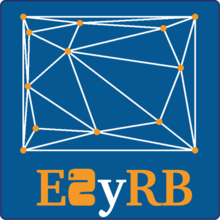m (→Links: add software link) |
m (→References: -> citation) |
||
| Line 19: | Line 19: | ||
* Error estimation based on leave-one-out strategy |
* Error estimation based on leave-one-out strategy |
||
| − | == |
+ | == Citation == |
* Nicola Demo, Marco Tezzele, Gianluigi Rozza (2018). EZyRB: Easy Reduced Basis method. Journal of Open Source Software, 3(24), 661, https://doi.org/10.21105/joss.00661 |
* Nicola Demo, Marco Tezzele, Gianluigi Rozza (2018). EZyRB: Easy Reduced Basis method. Journal of Open Source Software, 3(24), 661, https://doi.org/10.21105/joss.00661 |
||
Latest revision as of 17:33, 21 January 2019
 Note: This page has not been verified by our editors.
Note: This page has not been verified by our editors.
EZyRB: Easy Reduced Basis method, is a Python package for the Model Order Reduction based on baricentric triangulation for the selection of the parameter points and on Proper Orthogonal Decomposition for the selection of the modes. It is ideally suited for actual industrial problems, since its structure can interact with several simulation software simply providing the output file of the simulations. Up to now, it handles files in the vtk, stl, and mat formats. It has been used for the model order reduction of problems solved with MATLAB and openFOAM.
It has several tutorials for offline and online phases, and has been used in naval and automotive engineering problems as a non-intrusive tool for model order reduction, since it uses only solution field snapshots.
Features
The following main features are provided in the latest release of the software (as of January 2019):
- POD with interpolation capabilities
- Radial basis functions interpolator
- Input from different files such as VTK, MATLAB, and STL
- Mapping of different solution fields on a common mesh
- Selection of new parameters using the barycentric center of the region (simplex) with higher error
- Error estimation based on leave-one-out strategy
Citation
- Nicola Demo, Marco Tezzele, Gianluigi Rozza (2018). EZyRB: Easy Reduced Basis method. Journal of Open Source Software, 3(24), 661, https://doi.org/10.21105/joss.00661
Links
- Official software page: https://github.com/mathLab/EZyRB
- Online documentation: https://mathlab.github.io/EZyRB/
- mathLab computational science and engineering software: https://mathlab.sissa.it/cse-software

